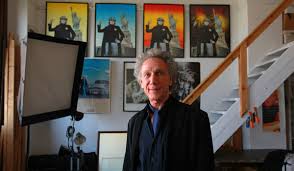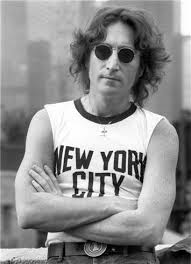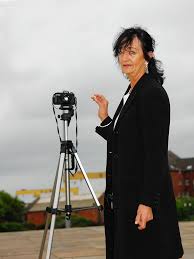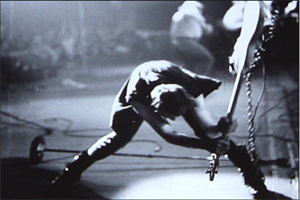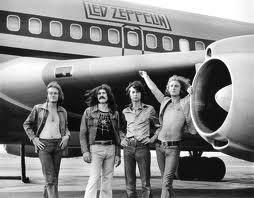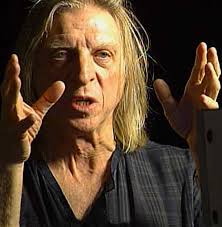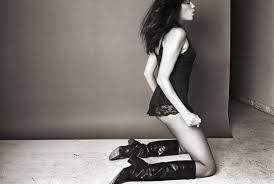 Going along with the theme of influential media figures and considering I put an emphasis on musicians and people that have influenced them I am going to be talking about three rock photo journalists: Pennie Smith, Norman Seeff, and Bob Gruen. All three began taking photos in the 60’s and have continued their prestigious careers throughout their lives. Influencing generation after generation of listeners, readers, photographers, and many other artists of different genres. One of these people is obviously me. This article will have something never before seen on this blog and that is a photograph I took myself. It is influenced by the styles of these three photographers.
Going along with the theme of influential media figures and considering I put an emphasis on musicians and people that have influenced them I am going to be talking about three rock photo journalists: Pennie Smith, Norman Seeff, and Bob Gruen. All three began taking photos in the 60’s and have continued their prestigious careers throughout their lives. Influencing generation after generation of listeners, readers, photographers, and many other artists of different genres. One of these people is obviously me. This article will have something never before seen on this blog and that is a photograph I took myself. It is influenced by the styles of these three photographers.
In an interview by Randy Patterson, Bob Gruen explained his beginnings and in many ways his whole career in just a few paragraphs:
As a 19 year old kid, Bob wrangled a press pass and got into the front row of what happened to be the Dylan Goes Electric show, which he says was chaos. And the rest is kind of the stuff of Rock and Roll history. Bob made his career as a rock and roll photographer by being a guy that people wanted to be around, being insanely talented, and as he says – putting himself in the right place at the right time.
In the sixties, there was this idea of “Turn on, tune in, and drop out,” which he did. “I wasn’t really looking for a career, so I was living with a Rock & Roll band instead.” He learned from his mom how to shoot photos when he was four or five years old, which was her hobby. He got his first camera when he was eight. (Start them young and expose them to everything! Right?) He began taking pictures of the band he was living with, and when they got an album deal, they used his pictures. He lived in the village with a rock band for most of the 60s and spent his time with his camera shooting the little local bands that would play at clubs. “You weren’t in a band to get famous back then. You were in a band because you couldn’t get a real job, and so you figured, might as well be in a band, get a girl, get a drink.” When I asked him about how he feels about the gentrification of NYC these days he said, “It’s easy to romanticize those days of gritty old New York,” he says, “but no one was that strung out because they were happy. Things change. I’m not nostalgic for the past. I remember the past, live in the present and look to the future.”
Pennie Smith took a slightly different approach but not far off from where Bob was coming from in his ideals and beliefs of photography. She told of some of her experiences in an interview with Steve Bateman over the phone in 2003.
You were born in London and studied graphics and fine art, at Twickenham Art School in the late 1960s. Is this where your interest in photography first began?
“No (laughing), I didn’t mean to be a photographer. I went to Art School and did photography for half a day a week, in the last year – hated it! The only bits that I enjoyed, was when I was sort of sent out with a camera, to do like what is commonly called reportage now, just go round the streets and snap. Then, I didn’t know what I wanted to do, I was doing layout for a magazine for a while, sort of an underground magazine, and odds and ends of left-field posters for various people. Then Nick Kent came up to the magazine, and started writing about Iggy Pop, Lou Reed etc., he knew exactly who was who, and who was liable to be influential”.
Are there any photographers that you admire?
“I got into photography totally inadvertently, so I still don’t think of myself as a photographer, but as somebody that takes photographs. I don’t know modern technology, I know what works for me, with my sort of bashed up old equipment. Therefore, I’m just as likely to get inspiration from a left-field bit of decoration, or a bit of music, or anything, as I am from another photographer. I don’t swot photographers, having said that, I like Don McCullin’s Vietnam stuff, I like some of the early Cecil Beaton, because I can just see that he was very much hit and miss, as I am. I quite like the wild-game aspect of it, I don’t use a flash, and I quite like wondering if I can make it with the lights that are there, and stopping the action in time. If it’s not dangerous – I don’t like it! There are no rock photographers, most rock photography bores the pants off me, particularly the modern stuff where it’s studio-orientated, glossy passport photos, no, don’t like”.
Norman Seeff has a very different approach to photography than these other two. He is quoted in Rolling Stone Magazine whom he worked for as saying, “My whole thing was, ‘It’s not about photography – it’s about communication.”
Norman was never one to make mention of an artist or a specific photographer that had more influence on him than that of Bob Cato who was his first boss coming to America and taking photographs. He had a powerful influence on Norman.
In all reality if you think about it these artist’s style are all expressed in these few small statements made by each. You can tell a lot about what kind of photographs they take just by these small bits of interviews they have all done.
I was amazed at how much I learned doing the research I did on these photographers and what makes them tick. I think one of the things that stood out above any other article that I have done is this was brand new territory for me. I have been doing research on musicians for as long as I can remember but I have never taken the opportunity to look at those that bring the images of these giants to life.
When I began doing the research for this I figured I would find some photographers that had cool pictures, I never imagined that I would find the photographers that had brought some of my heroes into a very real image that I could stare at and just be mesmerized by. They took a passion of mine and made it very real by taking pictures of the very thing that I wanted to become. I never thought I would find the people that take the style of photograph that I want to take. I found people that share my interest in a certain style and feel.
The single most important thing I learned from doing this though is that I found what I want to become. I found the style I want to perfect and share with the world. I found my identity in many regards. At the end of the day I learned about some influential media figures that directly affected me.
http://www.josephbellows.com/artists/norman-seeff/bio/
http://www.snapgalleries.com/photographers/pennie-smith/
http://www.repeatfanzine.co.uk/Rants/Penniesmith.htm
